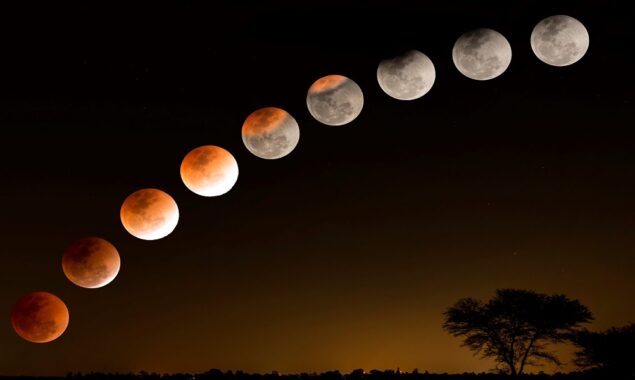
Total Lunar Eclipse 2022:Everything you need to know
According to different time zones, the first Lunar Eclipse of 2022 will occur on May 15 and 16, 2022. The Lunar Eclipse always occurs on the Full Moon, according to Hindu mythology (Purnima Tithti). The moon will turn a deep, rusty red color during this lunar eclipse, earning it the nickname “blood moon.”
The Lunar Eclipse will be effective for 5 hours 17 minutes. The eclipse will be visible from South and West Asia, Africa, sections of the Indian Ocean, all of South America, most of North America, and a few islands in the Pacific and Atlantic oceans, according to NASA. In India, it will not be seen.
In most parts of the southern hemisphere, the Total Lunar Eclipse will be visible. While the Moon will not be visible in India, areas of South America, Europe, and the Middle East will be able to witness it become blood red during the weekend.
The eclipse will be visible in cities such as Rome, Brussels, London, Paris, Havana, Johannesburg, Lagos, Madrid, Madrid, Santiago, Washington, DC, New York, Guatemala City, Rio de Janeiro, and Chicago. While these cities will view a total lunar eclipse, Ankara, Cairo, Honolulu, Budapest, and Athens will see a partial eclipse.
Blood Moon Total Lunar Eclipse 2022:
The eclipse will begin at 10:10 p.m. EDT on May 15, 2022, and 7:40 a.m. IST on May 16, 2022, according to NASA.
“One way to think of this is that a total lunar eclipse shows us a projection of all the sunrises and sunsets happening on the planet at that moment”, NASA says.
Stargazers will be able to see a red-tinted Moon known as the ‘Blood Moon’ during the partial lunar eclipse. As we all know, a lunar eclipse occurs when the Earth passes between the Sun and the Moon. According to NASA, the Moon takes on a dull and reddish color during the moment of totality when this happens. This occurs because, despite the Moon being completely engulfed in Earth’s shadow at the time, red wavelengths of sunlight seep through the Earth’s atmosphere and land on the Moon’s surface.
Read More News On
Catch all the Sci-Tech News, Breaking News Event and Latest News Updates on The BOL News
Download The BOL News App to get the Daily News Update & Follow us on Google News.




